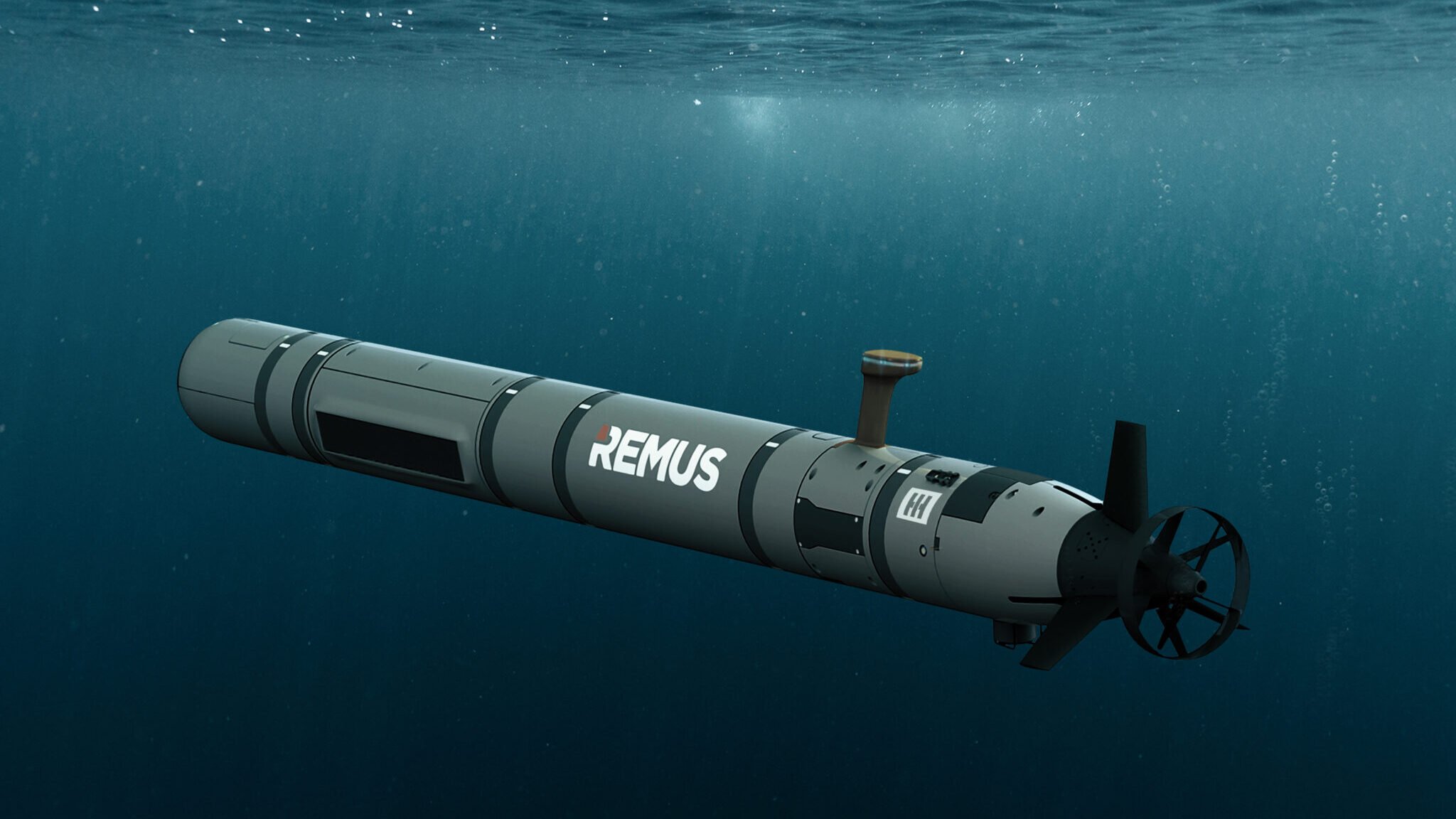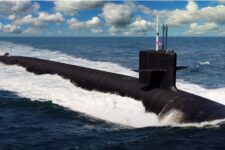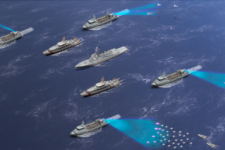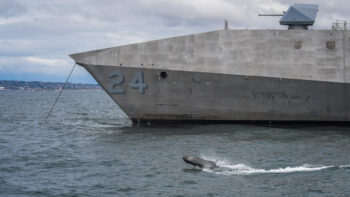
HII’s new Remus 620 has a modular design and is equipped with the company’s autonomy software. (Courtesy of HII)
WASHINGTON — HII today is unveiling its newest unmanned undersea vehicle, dubbed the Remus 620, the company’s latest play in an ongoing push to angle its product line towards the US Navy’s strategy for unmanned and autonomous systems.
The UUV, which is the next in a series of drones originally developed by Pocassett, Mass.-based company Hydroid before it was acquired by HII in 2020, boasts a modular design meant to segregate the system’s core components from those that a customer might want to alter for their own purposes.
For example, the company says the system’s size and endurance can be changed based on how many energy sections are equipped. HII claims the UUV can run for up to 110 hours or 275 nautical miles if all three energy sections are in use.
The UUV also has two universal bulkhead adapters that are intended to let the user equip the drone with unique payloads not offered or made by HII. Hardware and software development kits offered by the company are meant to give customers all the necessary technical documentation they would need to create their own novel adaptations.
Duane Fotheringham, president of unmanned systems at HII Mission Technologies, told Breaking Defense ahead of the vehicle’s public release that a variety of accessibility changes have also been made based on lessons learned from how customers have used older Remus models, such as where certain ports and removable components are placed.
The newest Remus UUV also integrates the Odyssey autonomy software suite that HII announced earlier this year.
The drone’s design and the changes over its predecessor, the Remus 600, amount to one of HII’s clearest plays yet to claim its place at the forefront of the Navy’s view for future undersea vehicle programs — with modularity a key component.
“This vehicle was designed from the beginning to be UMAA compliant,” said Fotheringham, referring to the Navy’s Unmanned Maritime Autonomy Architecture, an integral service effort focused on the technical workings of all Navy unmanned systems. “It’s a continuing developing standard, but we know the basis of it, so everything that we’ve done has been built so that we will be UMAA compliant.”
The new UUV’s public release comes as the company waits for a formal solicitation for the Lionfish program. HII was selected as the prime contractor for that program through a competition held by the Defense Innovation Unit earlier this year, and the Navy’s formal request for proposal is set to be published later this year.
Much like the modularity featured in the Remus 620, Fotheringham told Breaking Defense earlier this month the company aims to compartmentalize Lionfish in such a way that allows the Navy to adapt it to their own needs. The Remus 300 is the base model product being used for the Lionfish program.
Today’s release also follows HII’s wholesale rebranding announced early this year in which the company changed its name from Huntington Ingalls Industries to HII in an effort to pivot its focus away from exclusively building traditional warships, such as the Ford-class aircraft carrier Enterprise (CVN-80), and leaning more into developing new technologies.
Anduril, South Korean shipbuilder HD Hyundai announce new partnership for autonomous systems
US Navy Secretary Carlos Del Toro has praised South Korean shipbuilders such as HD Hyundai at recent events, encouraging more participation with US industry.



























